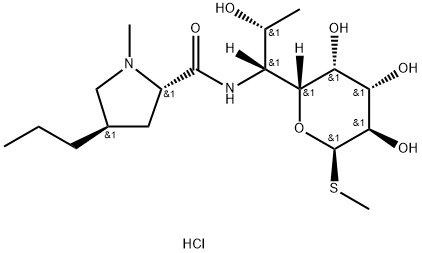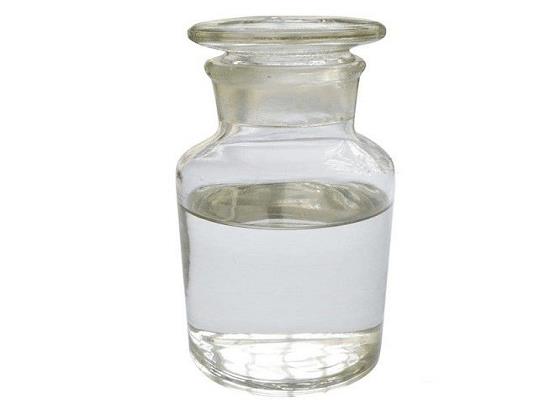Lincomycin Hydrochloride: Pharmacodynamics and Adverse Reactions
General Description
Lincomycin hydrochloride is a lincosamide antibiotic effective against Gram-positive cocci and bacilli, as well as anaerobic bacteria, although less potent than clindamycin. Its clinical use must be approached with caution due to potential severe adverse reactions, including hypersensitivity and Clostridium difficile-associated diarrhea. Common side effects include gastrointestinal disturbances such as persistent diarrhea, while serious reactions may involve blood disorders and immune responses, including anaphylaxis. Understanding resistance mechanisms that hinder lincomycin hydrochloride's efficacy is crucial for healthcare providers, ensuring appropriate patient monitoring and safety during treatment.

Figure 1. Lincomycin hydrochloride
Pharmacodynamics
Mechanism of Action
Lincomycin hydrochloride is an antibiotic belonging to the lincosamide class, primarily derived from the fermentation processes of the bacterium Streptomyces lincolnensis. This antibiotic exhibits notable activity against a variety of pathogenic microorganisms, especially Gram-positive cocci and bacilli, as well as certain Gram-negative cocci. In addition to its effectiveness against these bacteria, lincomycin hydrochloride is also active against anaerobic bacteria, although it is generally considered less potent compared to its closely related cousin, clindamycin. The therapeutic actions of lincomycin hydrochloride primarily target clinically significant Gram-positive pathogens, particularly strains of Staphylococcus and Streptococcus, making it a valuable option in treating various infections caused by these organisms. 1
Clinical Considerations and Safety Profile
Despite its efficacy, lincomycin hydrochloride's clinical application requires careful consideration due to the potential for severe adverse reactions. Reports of cutaneous hypersensitivity, such as Stevens-Johnson syndrome and toxic epidermal necrolysis, underscore the need for vigilance when prescribing this antibiotic, particularly for vulnerable populations including the elderly and those with a history of gastrointestinal disorders. Notably, lincomycin hydrochloride has also been linked to Clostridium difficile-associated diarrhea, which can escalate to life-threatening colitis, further highlighting the importance of monitoring in patients at risk. Additionally, the presence of preservatives such as benzyl alcohol in injectable forms of lincomycin hydrochloride poses risks for pediatric patients, potentially leading to gasping syndrome. 1
Resistance Mechanisms and Implications for Use
Understanding the pharmacodynamics of lincomycin hydrochloride also includes awareness of microbial resistance mechanisms that can influence treatment efficacy. The action of lincomycin hydrochloride is primarily mediated through its binding to the 23S rRNA of the 50S ribosomal subunit in bacteria. This interaction effectively inhibits protein synthesis, leading to bacterial growth suppression. However, resistance mechanisms, such as methylation of specific rRNA residues, can compromise this action. The most prevalent mechanism affecting lincomycin hydrochloride and other lincosamides involves alterations at positions A2058, A2059, and C2611, which prevent effective binding. Consequently, health care providers must be attentive to the potential for resistance when prescribing lincomycin hydrochloride, as previous antibiotic exposure may limit its effectiveness against resistant bacterial strains. 1
Adverse Reactions
Common Reactions
Lincomycin hydrochloride is associated with a variety of adverse reactions, which can be categorized by body systems. Among gastrointestinal disorders, common reactions include persistent diarrhea occurring in approximately 4.3% of patients, as well as nausea (1.8%) and vomiting (1.6%). Rare cases of stomatitis have also been reported, while glossitis, abdominal discomfort, and pruritus have been noted but cannot be quantified. In the skin and subcutaneous tissue category, lincomycin hydrochloride can lead to rash (0.8%) and urticaria (0.1%), with rare occurrences of pruritus (0.4%). There are also concerns regarding infections, such as vaginal infections that occur in about 0.12% of patients, with a risk for more severe conditions like pseudomembranous colitis attributed to Clostridium difficile. 2
Serious Adverse Reactions
In addition to the more common adverse effects, lincomycin hydrochloride may cause serious reactions that are less frequent but significant. These include severe blood and lymphatic system disorders such as pancytopenia and agranulocytosis, as well as potential immune system reactions like anaphylactic responses and angioedema, all of which are classified as "not known." Hepatobiliary issues such as jaundice and abnormal liver function tests may arise, alongside renal complications like renal impairment and azotemia. Cardiac risks, including cardio-respiratory arrest and hypotension, have also been documented, particularly in patients receiving intravenous forms of lincomycin hydrochloride. The comprehensive awareness of these adverse reactions is essential for healthcare providers when prescribing lincomycin hydrochloride, ensuring patient safety and appropriate monitoring during treatment. 2
Reference
1. Lincomycin. DrugBank. DrugBank Accession Number: DB01627.
2. LINCOMYCIN- lincomycin hydrochloride injection, solution. DailyMed. 2023; NDC Code(s): 0404-9901-10.
);See also
Lastest Price from Lincomycin hydrochloride manufacturers

US $6.00/kg2024-09-19
- CAS:
- 859-18-7
- Min. Order:
- 1kg
- Purity:
- 99%
- Supply Ability:
- 2000KG/Month

US $0.00/BOU/Drum2024-09-18
- CAS:
- 859-18-7
- Min. Order:
- 1KG
- Purity:
- 96%-102%;EP
- Supply Ability:
- 1000KGS


